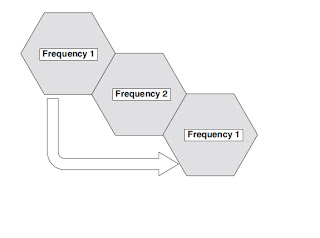The number of cells in any geographic area is determined by the number of MS
subscribers who will be operating in that area, and the geographic layout of the area
(hills, lakes, buildings etc).
The maximum cell size for GSM is approximately 70 km in diameter, but this is
dependent on the terrain the cell is covering and the power class of the MS. In GSM, the
MS can be transmitting anything up to 8 Watts; obviously, the higher the power output of
the MS the larger the cell size. If the cell site is on top of a hill, with no obstructions for
miles, then the radio waves will travel much further than if the cell site was in the middle
of a city, with many high-rise buildings blocking the path of the radio waves.
Generally large cells are employed in:
_ Remote areas.
_ Coastal regions.
_ Areas with few subscribers.
_ Large areas which need to be covered with the minimum number of cell sites.
Small cells are used where there is a requirement to support a large number of MSs, in a
small geographic region, or where a low transmission power may be required to reduce
the effects of interference. Small cells currently cover 200 m and upwards.
Typical uses of small cells:
_ Urban areas.
_ Low transmission power required.
_ High number of MSs.
There is no right answer when choosing the type of cell to use. Network providers would
like to use large cells to reduce installation and maintenance cost, but realize that to
provide a quality service to their customers, they have to consider many factors, such as
terrain, transmission power required, number of MSs etc. This inevitably leads to a
mixture of both large and small cells.
Frequency Re-use
Standard GSM has a total of 124 frequencies available for use in a network. Most
network providers are unlikely to be able to use all of these frequencies and are generally
allocated a small subset of the 124.
We will take an example here suppose a network provider has been allocated 48 frequencies to provide coverage over a large area, let us take for example Great Britain.As we have already seen, the maximum cell size is approximately 70 km in diameter,thus our 48 frequencies would not be able to cover the whole of Britain. To overcome this limitation the network provider must re-use the same frequencies over and over again, in what is termed a “frequency re-use pattern”. When planning the frequency re-use pattern the network planner must take into account how often to use the same frequencies and determine how close together the cells are, otherwise co-channel and/or adjacent channel interference may occur. The network provider will also take into account the nature of the area to be covered. This may range from a densely populated city (high frequency re-use, small cells, high capacity) to a sparsely populated rural expanse (large omni cells, low re-use, low capacity).



No comments:
Post a Comment